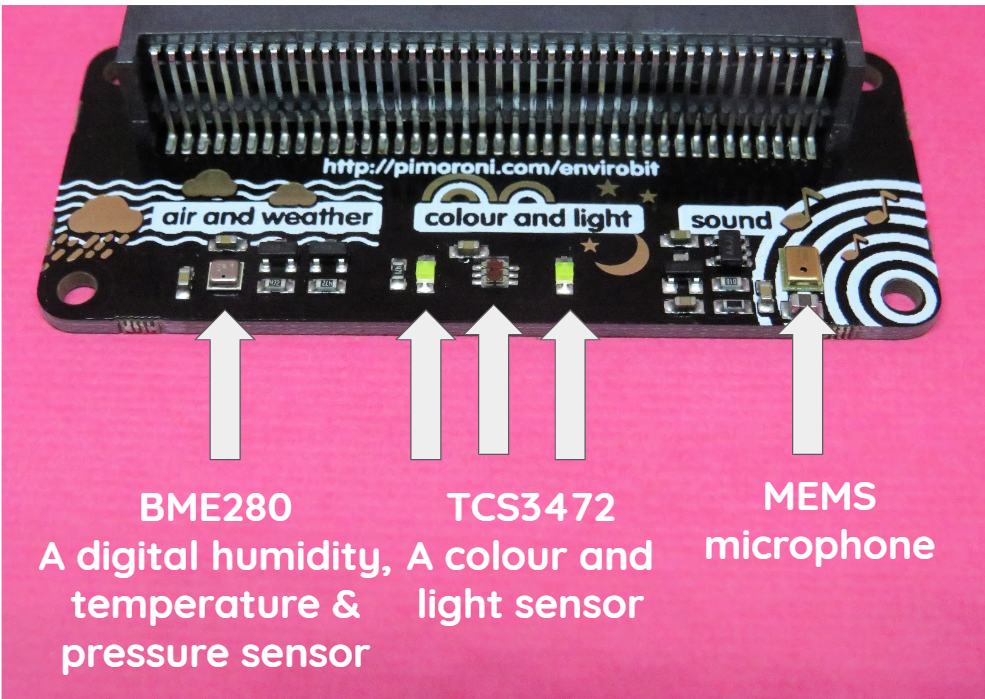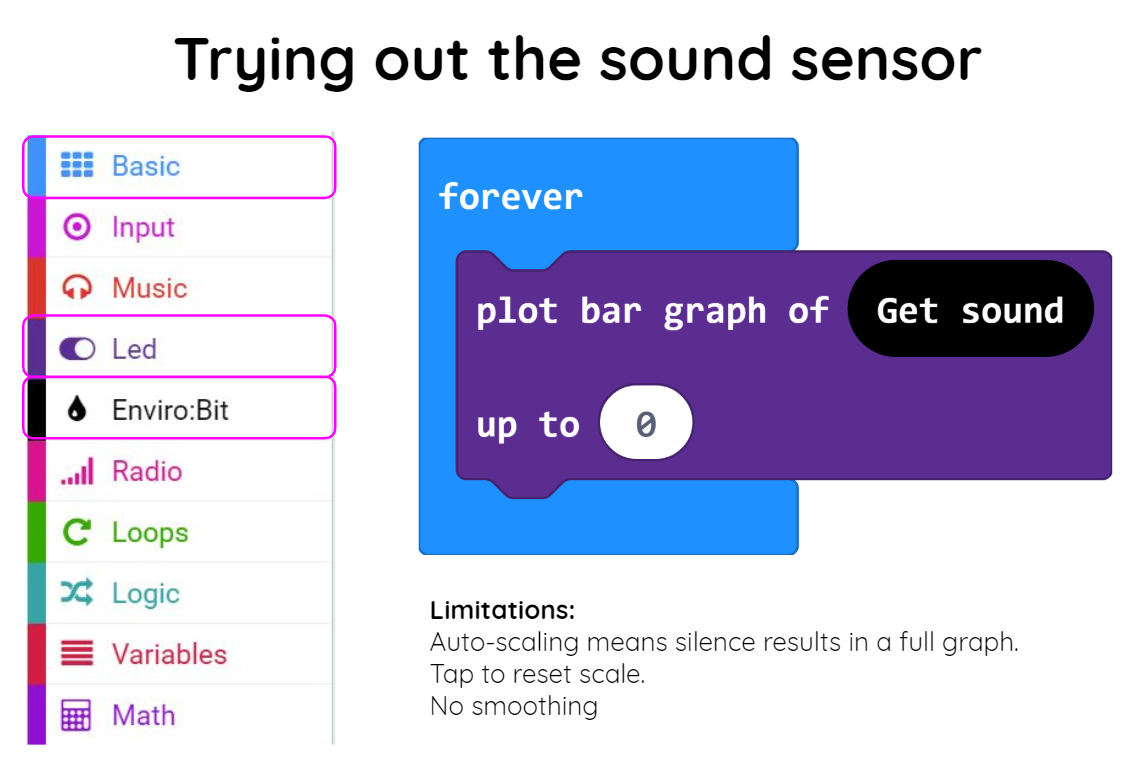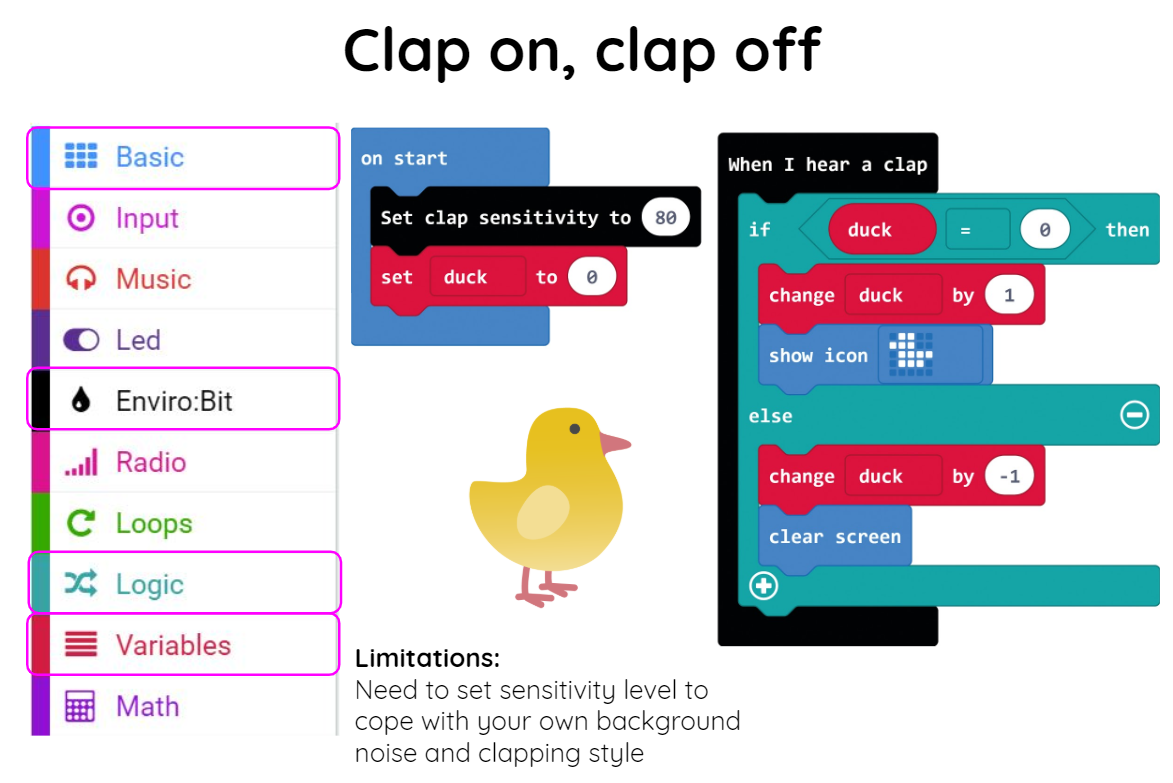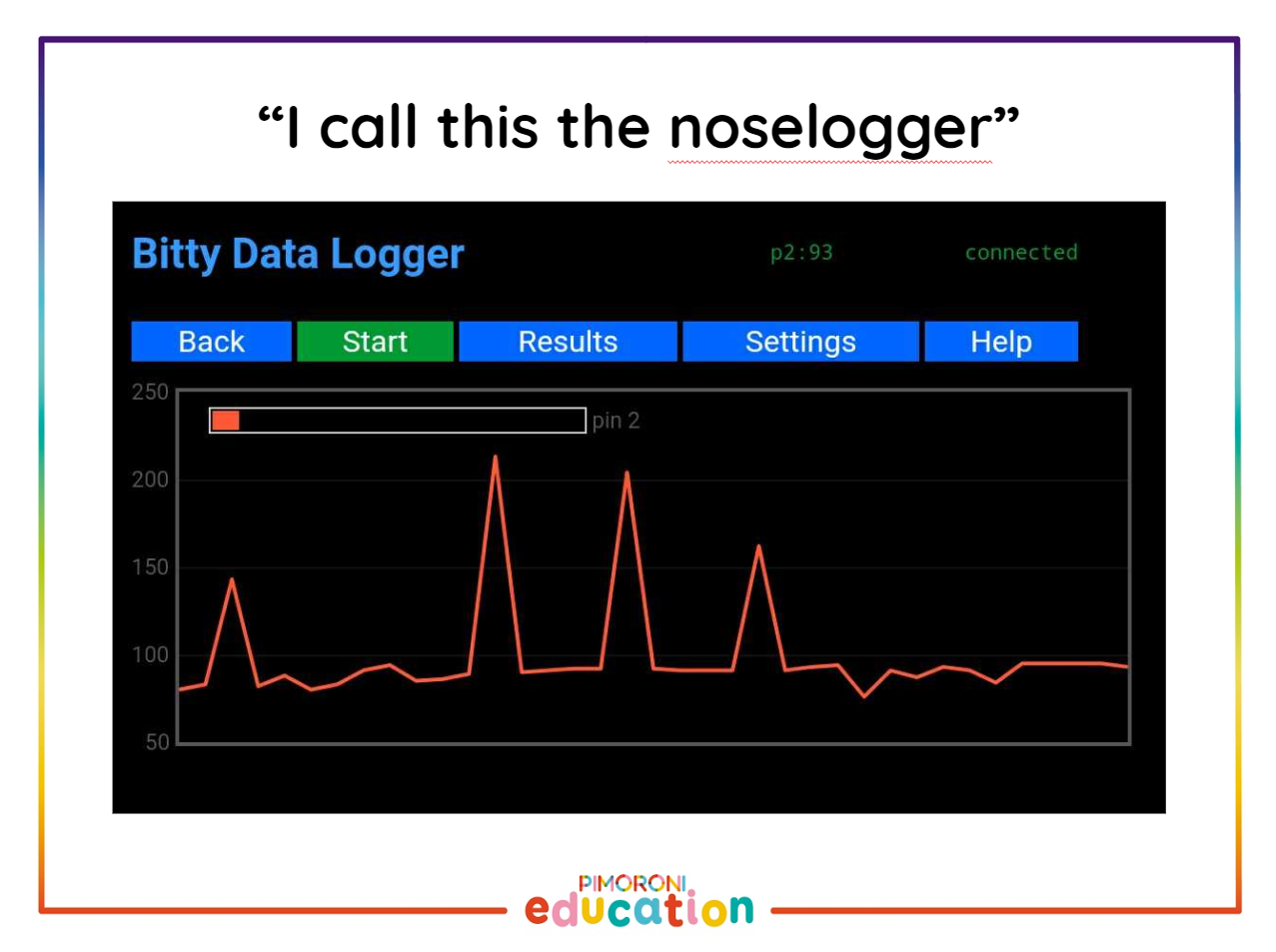Today we ran some activities on the micro:bit stand, using our enviro:bit. There was duck-summoning, a rainbow detector, and of course, the nose-logger.

We took a look at what's on board the enviro:bit, and installed the code blocks for it in makecode. Once we had the blocks, it was really quick to start taking sound readings of the super-noisy environment that is BETT. If you have an envirobit, try out the difference between "get sound" and "get noise level" - you'll see that one is smoothed and is better used for some applications than others.

After that, we looked at another application for the MEMS microphone - we've made a coding block that detects a clap, or another sharp sound like a knock on the table.

The noisy environment meant that our ducks were going on and off like a disco light, but handily you can alter the sensitivity to compensate for that.

The light sensor on the enviro:bit can detect colours as well as light, so we investigated the amount of red, green, and blue light detected by placing different objects next to the sensor.
Sadly, time was running out so we had a quick demo of the noselogger - which was the colour sensor set to detect... my nose.
The app we used was the BittySoftware datalogger, which connects to the micro:bit via Bluetooth and outputs your data in real time. One constraint on the app is that it is set up to read pin0, pin1, and pin2, but it's easily altered and we'll try to get that up as a separate tutorial.

If you have any questions about these activities, you know where we are!
If you want to download the handouts, they are a printable pdf available here. CC by SA.